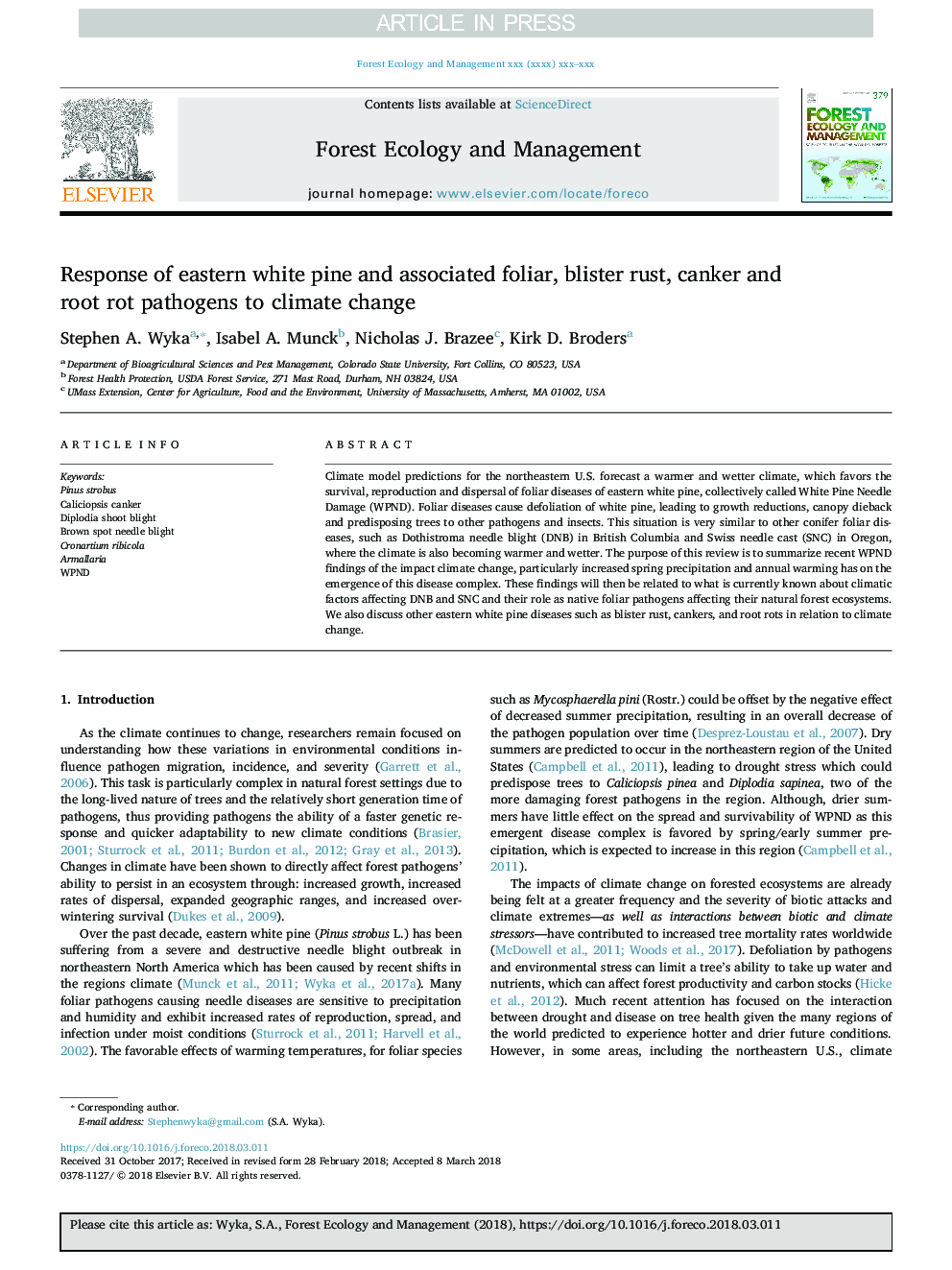| Article ID | Journal | Published Year | Pages | File Type |
|---|---|---|---|---|
| 6541632 | Forest Ecology and Management | 2018 | 9 Pages |
Abstract
Climate model predictions for the northeastern U.S. forecast a warmer and wetter climate, which favors the survival, reproduction and dispersal of foliar diseases of eastern white pine, collectively called White Pine Needle Damage (WPND). Foliar diseases cause defoliation of white pine, leading to growth reductions, canopy dieback and predisposing trees to other pathogens and insects. This situation is very similar to other conifer foliar diseases, such as Dothistroma needle blight (DNB) in British Columbia and Swiss needle cast (SNC) in Oregon, where the climate is also becoming warmer and wetter. The purpose of this review is to summarize recent WPND findings of the impact climate change, particularly increased spring precipitation and annual warming has on the emergence of this disease complex. These findings will then be related to what is currently known about climatic factors affecting DNB and SNC and their role as native foliar pathogens affecting their natural forest ecosystems. We also discuss other eastern white pine diseases such as blister rust, cankers, and root rots in relation to climate change.
Keywords
Related Topics
Life Sciences
Agricultural and Biological Sciences
Ecology, Evolution, Behavior and Systematics
Authors
Stephen A. Wyka, Isabel A. Munck, Nicholas J. Brazee, Kirk D. Broders,
